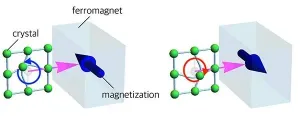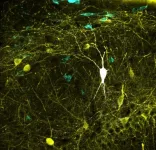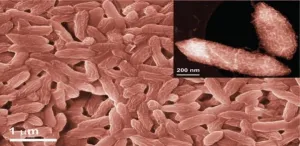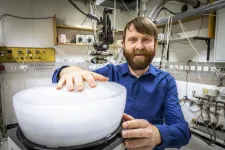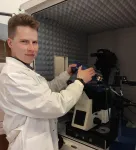UMass Amherst astronomer reveals never-before-seen detail of the center of our galaxy
New image made using NASA's Chandra X-Ray Observatory hints at previously unknown interstellar energy source at the Milky Way center
2021-05-27
(Press-News.org) AMHERST, Mass. - New research by University of Massachusetts Amherst astronomer Daniel Wang reveals, with unprecedented clarity, details of violent phenomena in the center of our galaxy. The images, published recently in Monthly Notices of the Royal Astronomical Society, document an X-ray thread, G0.17-0.41, which hints at a previously unknown interstellar mechanism that may govern the energy flow and potentially the evolution of the Milky Way.
"The galaxy is like an ecosystem," says Wang, a professor in UMass Amherst's astronomy department, whose findings are a result of more than two decades of research. "We know the centers of galaxies are where the action is and play an enormous role in their evolution." And yet, whatever has happened in the center of our own galaxy is hard to study, despite its relative proximity to Earth, because, as Wang explains, it is obscured by a dense fog of gas and dust. Researchers simply can't see the center, even with an instrument as powerful as the famous Hubble Space Telescope. Wang, however, has used a different telescope, NASA's Chandra X-Ray Observatory, which "sees" X-rays, rather than the rays of visible light that we perceive with our own eyes. These X-rays are capable of penetrating the obscuring fog--and the results are stunning.
Wang's findings, which were supported by NASA, give the clearest picture yet of a pair of X-ray-emitting plumes that are emerging from the region near the massive black hole lying at the center of our galaxy. Even more intriguing is the discovery of an X-ray thread called G0.17-0.41, located near the southern plume. "This thread reveals a new phenomenon," says Wang. "This is evidence of an ongoing magnetic field reconnection event." The thread, writes Wang, probably represents "only the tip of the reconnection iceberg."
A magnetic field reconnection event is what happens when two opposing magnetic fields are forced together and combine with one another, releasing an enormous amount of energy. "It's a violent process," says Wang, and is known to be responsible for such well-known phenomena as solar flares, which produce space weather powerful enough to disrupt power grids and communications systems here on Earth. They also produce the spectacular Northern Lights. Scientists now think that magnetic reconnection also occurs in interstellar space and tends to take place at the outer boundaries of the expanding plumes driven out of our galaxy's center.
"What is the total amount of energy outflow at the center of the galaxy? How is it produced and transported? And how does it regulate the galactic ecosystem?" These, says Wang, are the fundamental questions whose answers will help to unlock the history of our galaxy. Though much work remains to be done, Wang's new map points the way. For more information, including additional images and video, visit the Chandra X-Ray Observatory's Galactic Center website.
INFORMATION:
Contact: Daniel Wang, wqd@umass.edu
Daegan Miller, drmiller@umass.edu
[Attachments] See images for this press release:

ELSE PRESS RELEASES FROM THIS DATE:
2021-05-27
Individuals with genetic high cholesterol, heart disease or both, who were infected with COVID-19 had more heart attacks according to new research by the FH Foundation. While previous studies have speculated about poorer outcomes if a person with genetic high cholesterol - called familial hypercholesterolemia (FH) contracts COVID-19, this study from the FH Foundation's national healthcare database is the first to demonstrate higher heart attack rates in the real world. Published online in the American Journal of Preventive Cardiology, the study also importantly confirms that COVID-19 increases heart attack rates in individuals with established atherosclerotic cardiovascular disease (ASCVD).
The FH Foundation performed an analysis of 55,412,462 individuals, separating groups into six ...
2021-05-27
Leesburg, VA, May 27, 2021--According to an open-access Editor's Choice article in ARRS' American Journal of Roentgenology (AJR), accurate prenatal diagnosis of severe placental accreta spectrum (PAS) disorder by imaging could help guide maternal counseling and selection between hysterectomy and uterine-preserving surgery.
"The findings suggest strong performance of placental bulge in diagnosing severe PAS on both ultrasound and MRI, with potentially relatively stronger performance on MRI," wrote corresponding author Manjiri Dighe from the department of radiology at the University of Washington School of Medicine. "Nonetheless, interobserver agreement remains suboptimal on both modalities."
On ultrasound and MRI alike, the placental bulge sign represents ...
2021-05-27
A small Japanese fishing community devastated by the Great East Japan Earthquake and Tsunami of 2011 managed to recover from the disaster through cooperative community activity despite the propensity for individualist-competitive behavior within fisheries - cooperative activity that continued many years later.
A social scientist who spent years interviewing fishers in the fishing hamlet of Isohama has discovered a long-standing continuum of competitive and collective endeavor amongst fishers, with potential ramifications for how government policy can better promote resilience in the wake of natural disasters and other calamities.
The findings appear in the journal of Disaster ...
2021-05-27
Using the circular vibration of surface acoustic waves, a collaborative research group have successfully controlled the magnetization of a ferromagnetic thin film.
Their research was published in the journal Nature Communications on May 10, 2021.
Essentially, acoustic waves are waves of atomic vibrations in a substance. When the waves propagate across the surface of a material, the vibration becomes circular. This circular motion, known as angular momentum, can help measure rotational motion.
Surface acoustic waves are utilized in bandpass filters in cell phones. The bandpass allows certain frequencies ...
2021-05-27
New Orleans, LA - A review study led by Maria D. Sanchez-Pino, PhD, an assistant research professor in the departments of Interdisciplinary Oncology and Genetics at LSU Health New Orleans' School of Medicine and Stanley S. Scott Cancer Center, advances knowledge about the connection between obesity-associated inflammation and cancer. The researchers suggest that inflammatory cells with immunosuppressive properties may act as a critical biological link between obesity and cancer risk, progression, and metastasis. The paper is published in the June 2021 issue of Obesity, available here.
Despite evidence showing that ...
2021-05-27
The study, which is published in the journal PLOS Biology, represents the most comprehensive mapping performed to date between neural activity recoded in vivo and identified neuron types. This major breakthrough may enable biologically meaningful computer modeling of the full neuronal circuit of the hippocampus, a region of the brain involved in memory function.
Circuits of the mammalian cerebral cortex are made up of two types of neurons: excitatory neurons, which release a neurotransmitter called glutamate, and inhibitory neurons, which release GABA (gamma-aminobutanoic acid), the main inhibitor of the central nervous system. "A balanced dialogue between the 'excitatory' and 'inhibitory' activities is critical for brain function. ...
2021-05-27
Exploiting the unusual metal-reducing ability of the iron-breathing bacterium Geobacter sulfurreducens, KAUST researchers have demonstrated a cheap and reliable way to synthesize highly active single-atom catalysts. The innovation, which could dramatically improve the efficiency and cost of hydrogen production from water, highlights the role nature can play in the search for new energy systems.
Many chemical reactions require a catalyst as a reactive surface where atoms or molecules are brought together with the right amount of energy to spark a chemical change. Water, for example, can be split into hydrogen and oxygen atoms by reacting on a pair of electrodes made of platinum and iridium oxide. The efficiency of the reaction, however, depends largely ...
2021-05-27
Water freezes and turns to ice when brought in contact with a cold surface - a well-known fact. However, the exact process and its microscopic details remained elusive up to know. Anton Tamtögl from the Institute of Experimental Physics at TU Graz explains: "The first step in ice formation is called 'nucleation' and happens in an incredibly short length of time, a fraction of a billionth of a second, when highly mobile individual water molecules 'find each other' and coalesce." Conventional microscopes are far too slow to follow the motion of water molecules and so it is impossible to use them to 'watch' how molecules combine on top of solid surfaces.
Findings turn previous understanding of ice formation upside down
With the help ...
2021-05-27
DURHAM, N.C. -- What makes preschoolers eat their veggies? Raise their hand? Wait their turn? "Because I say so" is a common refrain for many parents. But when it comes to getting kids to behave, recent research suggests that the voice of adult authority isn't the only thing that matters. Around age three, fitting in with the group starts to count big too.
That's the finding of a new study by Duke University researchers showing that, by their third birthday, children are more likely to go along with what others say or do for the sake of following the crowd, rather than acting out ...
2021-05-27
Malignant tumour cells undergo mechanical deformation more easily than normal cells, allowing them to migrate throughout the body. The mechanical properties of prostate cancer cells treated with the most commonly used anti-cancer drugs have been investigated at the Institute of Nuclear Physics of the Polish Academy of Sciences in Cracow. According to the researchers, current drugs can be used more effectively and at lower doses.
In cancer, a key factor contributing to the formation of metastasis is the ability of the neoplastic cells to undergo ...
LAST 30 PRESS RELEASES:
[Press-News.org] UMass Amherst astronomer reveals never-before-seen detail of the center of our galaxy
New image made using NASA's Chandra X-Ray Observatory hints at previously unknown interstellar energy source at the Milky Way center



